Types of CoalWhen it comes to fuel, coal is considered the essential source. In general, coal is one of the non-renewable sources of energy on Earth, which typically takes millions of years to form. However, there are different types of it. It is very important to select the appropriate type of coal for various purposes. In this article, we are discussing the different types of coal, including their definitions and characteristics. Before discussing the various coal types, let us first briefly understand the definition of coal and its formation process. What is a Coal?Coal refers to a combustible black or dark brownish-black sedimentary rock containing relatively high amounts of carbon and hydrocarbons. In other words, coal refers to a solid carbon-rich material that is black or brown and often occurs in stratified sedimentary deposits. It is also known as 'Black Gold'. 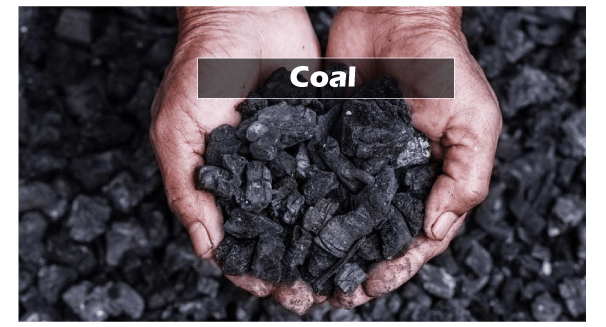
Coal is one of the essential types of fossil fuels. It usually takes millions of years to form. Besides, coal is sorted as a non-renewable energy resource or an exhaustible natural resource. This is because coal is produced in limited quantities. How is Coal Formed?Coal is believed to have been formed millions of years ago. It is believed to be mainly when the Earth was covered only by vast moist forests, trees, shrubs, herbs, ferns, etc. All those plants completed their life cycle and fell on the surface of Earth. Most of which later were deposited in water. As part of natural processes, new plants evolved and replaced the old ones. The entire cycle was repeated over and over for many years. The Earth's surface kept changing and overlapping, forming many layers with different elements' compositions. Since many thick layers of dead decomposed material were lying beneath the Earth's surface, they all had to withstand varying amounts of heat and pressure. This eventually led to changes in both the chemical and physical properties of each layer. Due to the constant change in properties, the oxygen content was extracted from the plant layers, which led to the accumulation of rich carbon. After a long time, the deposited plants in layers were converted into coal. Despite carbon, there are many other elements found in coal, such as hydrogen, nitrogen, sulfur, ash, etc. 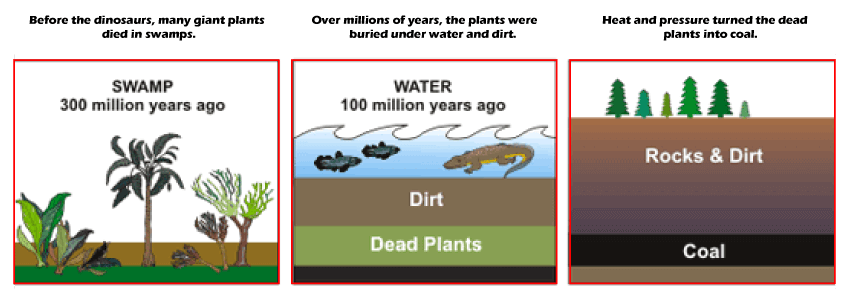
Types of CoalCoal usually consists of different elements such as carbon, volatile matter, moisture, ash, etc. The amounts of carbon in coal play a vital role in determining the coal's overall quality. Besides, coal also undergoes different physical and chemical changes due to different amounts of heat and pressure. Based on the composition of elements and certain property changes, it can be classified into different types. In particular, coal is divided into the following types:
These four types can also be divided between low-rank coals (lignite and sub-bituminous) and hard coals (bituminous and anthracite) based on the presence of carbon content. Generally, high carbon content is found in coals that have spent more time during their formation, while the lower carbon content is found in younger coals that spent less time during formation. Let us discuss each type in detail: LigniteLignite, also called brown coal, is considered the youngest form of coal that is usually brown. It is the kind of youngest fossil fuel that is formed in about 60 million years. The formation period is relatively short as compared to other coal types. This type of coal usually consists of 25%-35% of carbon deposits and 65%-75% of other compounds, such as mercury, sulfur, etc. Since lignite coal is the young form of coal, it has the lowest heating value and relatively high moisture content. As a result, the amount of carbon in lignite is low. Lignite coal is best known for power (electricity) generation and is believed to be about 17% of the world's coal reserves. 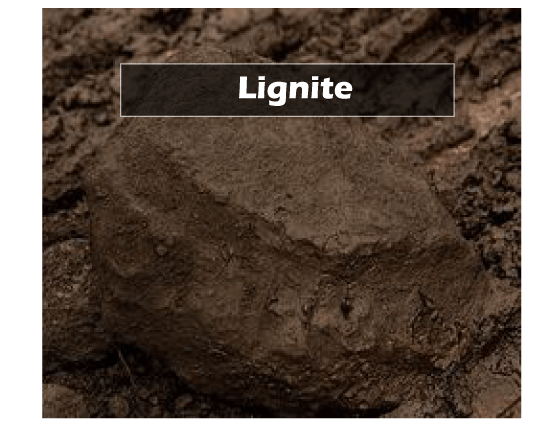
SubbituminousAfter millions of years, lignite is continually treated with extreme pressure and temperature and convert to sub-bituminous. Sub-bituminous is an intermediate stage of coal that lies between the lignite and bituminous. This type of coal usually consists of 35%-45% of carbon deposits and is believed to have an age of approximately 251 million years. The color of this coal type is generally grey-black or dark brown. Sub-bituminous is also known as black lignite. Subbituminous contains low-to-moderate heating values, typically higher than lignite and lower than bituminous. This type of coal is used for many purposes in power generation as well as industrial processes. This type of coal is believed to be a part of about 30% of the world's coal reserves. 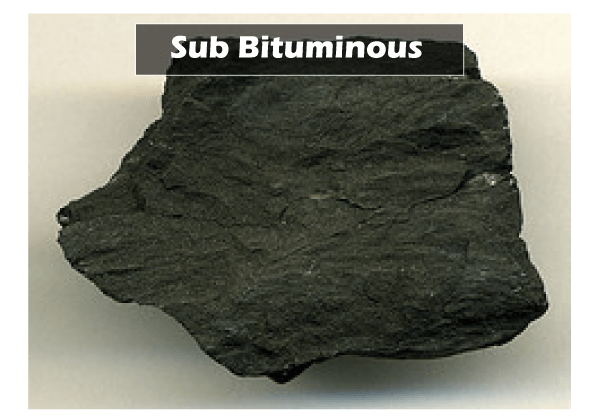
BituminousBituminous coal is intermediate coal between sub-bituminous and anthracite. This type of coal is relatively much harder and black when compared to lignite coal or sub-bituminous coal. The amounts of carbon deposits in bituminous typically range between 45 percent to 86 percent. Bituminous coal is one of the longest buried fossil fuels and is believed to be around 300 million years old. Generally, the bituminous coal looks smooth and shiny with a blocky structure; however, it has thin, alternating, shiny, and dull layers that can be seen with a closer look. Bituminous coal contains a higher heating value, which is, however, lower than anthracite. Moreover, it has low moisture content. This type of coal is believed to be a part of about 52% of the world's coal reserves. Bituminous is further sub-divided as thermal and metallurgical. Thermal coal is mainly used in electricity generation, producing cement, and several industrial purposes, while metallurgical coal is mainly used to manufacture iron and steel. 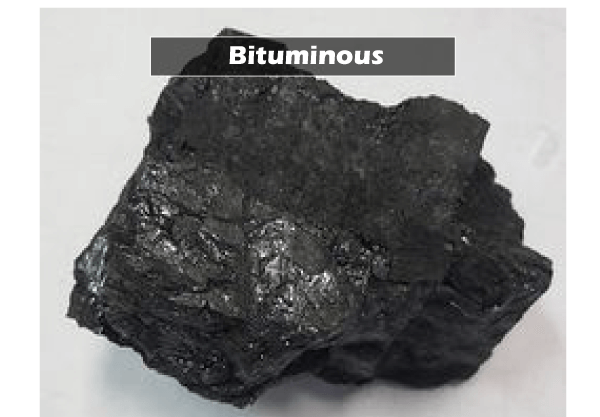
AnthraciteAnthracite is by far considered the highest quality of coal, with about 86%-97% of carbon deposits. The amount of carbon deposits in this coal is higher than all other coal types. It is a hard dark black coal and often termed hard coal. Anthracite is the oldest type of coal and is believed to have approximately 350 million years old. Due to such a long burial time, anthracite exhibits comparatively high energy density. This eventually makes anthracite heat up quickly and become very hot while burning. Anthracite coal contains the highest amounts of heating value and lowest moisture content. When burnt, anthracite can reach very high temperatures. This type of coal is believed to be a part of only about 1% of the world's coal reserves, a comparatively very small portion of the overall coal available in the market. Anthracite is mainly used for space heating as it does not produce much smoke. Furthermore, it is considered an ideal smokeless fuel for many applications in domestic and industrial purposes. 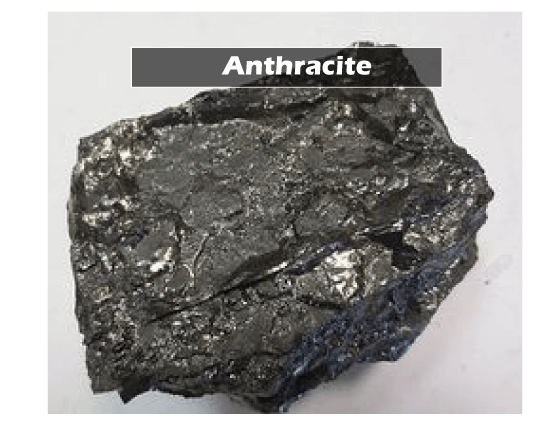
Coal RanksA coal rank refers to stages involved in a slow, natural process called 'coalification'. This process mainly involves stages during which the matter and properties of buried plants change into harder, drier, carbon-rich material. In particular, the rank is typically determined by:
These factors are primarily responsible for determining the 'degree of transformation of the original plant material into a carbon'. Specifically, the amount of carbon deposits is the main factor that decides a coal's rank. The following image displays the transformation of plant material into coal, based on coal ranks: 
As shown in the image above, the plant material first turns to peat, the precursor to coal. It is a soft, organic structure of partially decayed plants and mineral water. When peat is passed continuously at extreme pressures and temperatures, it undergoes many physical and chemical changes. This eventually converts peat into various forms of coal accordingly. Generally, peat is first converted to lignite, further sub-bituminous, bituminous, and anthracite.
Next TopicTypes of Plants
|
 For Videos Join Our Youtube Channel: Join Now
For Videos Join Our Youtube Channel: Join Now
Feedback
- Send your Feedback to [email protected]
Help Others, Please Share









